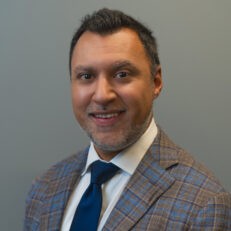
AN IN-DEPTH STUDY OF GENERAL EDUCATION REVISION
In 2013, Academic Impressions conducted a survey of 308 post-secondary institutions and conducted select follow-up interviews to learn more about how US and Canadian institutions are seeking to revise their core curriculums.
We presented our findings and several case studies in our paper General Education Reform: Unseen Opportunities, and based on our research, we designed an intensive and highly acclaimed conference for institutions seeking to revise general education.
The article that follows is based on an excerpt from our 2013 paper.
Based on our 2013 research into 308 post-secondary institutions in North America, we have identified several common “blind spots” in general education revision—decision points that most curriculum committees skip.
We have also identified a handful of institutions that didn’t skip these critical steps, and that were able to develop a more holistic and impactful core curriculum. We hope that this article and our other resources on general education will help you learn from their successes!
Blind Spot 1: Are You Talking to Enough Faculty?
When most institutions revise their general education curriculum, they don’t seek the input of external stakeholders to help define the goals and outcomes of general education programs—a critical mistake. And our research shows that even many internal stakeholders are only minimally consulted, if at all.
Yet, when asked what challenges they face in revising general education, many academic leaders responding to our survey indicated that the most significant was overcoming faculty resistance to the effort. In fact, out of 223 institutions that answered this question, more than half cited “faculty turf war” or “resistance to change.”
And in our follow-up conversations, many institutions that have completed a general-education revision effort regretted not including more faculty earlier in the conversation.
The reality is that communicating about the process early and soliciting input from a broad base of faculty, rather than just involving the “usual suspects,” can help to alleviate tensions later in the process, ensure greater buy-in for the eventual rollout of the revised curriculum, and help you in crafting a core that leverages the combined brainpower of your entire institution.
“Who does the core curriculum belong to? It belongs to everyone. Everyone is a stakeholder. Conduct surveys, brown bag discussions, information sessions with opportunities for feedback, a regular town hall, or a blog. Find ways to involve as many people as possible, and invite them to care and to contribute by making the work visible.”
Elizabeth Beaulieu, Dean of the Core Division, Champlain College
Blind Spot 2: Are You Only Talking to Faculty?
It’s a given that faculty will drive the general education revision, but there is a significant opportunity to take a more holistic approach to improving the quality of the general education program. Yet, only 3 out of 308 institutions surveyed involved or solicited input from stakeholders outside of academic affairs—less than 1%.
During our follow-up calls, we asked institutions to tell us who they wished, in hindsight, that they had included in the effort to revise general education.
The answers: employers, students, alumni, representatives from student services, and admissions.
ENROLLMENT MANAGEMENT
Another Academic Impressions survey (September 2013) found that 47% of institutions experienced enrollment declines in 2013—and some of those declines were significant (with enrollment targets missed by 5, 10, or even 25%). Given this, can inviting enrollment managers to the table help inform efforts to ensure that the general education program is distinctive and competitive?
STUDENT SERVICES AND ACADEMIC SUPPORT SERVICES
The general education program—because it touches all of your students and does so from the first week on campus—offers your best opportunities for a positive impact on persistence and academic success. Should you invite input from those offices in student services and academic support services that most regularly review data on student retention and that direct many of the institution’s co-curricular and advising initiatives aimed at improving retention?
STUDENTS
As you strive to develop a core curriculum that is relevant and effective in preparing students for the demands of twenty-first century citizenship and the twenty-first century market, will you invite students to the early discussions of the revision effort?
“I come from a learning communities background and deeply value student feedback and participation; although the curriculum is absolutely the purview of the faculty, it is shocking to me when no students are involved in an initiative that so dramatically affects them and their entire four years of education.”
Elizabeth Beaulieu, Dean of the Core Division, Champlain College
ALUMNI
Your past students may be able to offer the most critical insights of all. They can tell you what skills and competencies matter to them in their lives and careers, and can offer examples of where your curriculum supported—or failed to support—the development of those skills. They may be able to cite specific learning experiences they wished they could have had. Consider:
- Conducting a survey of your alumni early in your review of the core curriculum
- Assembling an alumni advisory board
A TWO-FOR-ONE OPPORTUNITY
Engaging alumni through an advisory board can both inform important curricular changes, but can also serve to engage them in meaningful ways that may lead to future support.
Task the board with real research projects; have them help you with environmental scanning or with surveying employers and other stakeholders. Present them with some of your most challenging questions and benefit from their combined brainpower. This strategy treats alumni as key stakeholders and cultivates greater investment in the institution.
EMPLOYERS
What mechanism can you put in place (advisory boards, interviews, solicitation of feedback at multiple points in the process) to invite input from employers, who are increasingly concerned with a “skills gap” in graduating students and thus are invested in the same learning outcomes you are: critical thinking, communication, information and digital literacy, problem solving, teamwork and collaboration?
Given the criticality of what general education can offer, we would encourage all institutions to engage a broad set of stakeholders in the process of setting goals and outcomes, communication and securing buy-in, and ensuring successful implementation of the new standards. External stakeholders including employers, community leaders, and legislators should be brought into the process too, in appropriate ways, and not just for institutions with a public mandate. The focus has to be on alignment of stakeholder needs and institutional mission.
Blind Spot 3: Are You Planning for Transfer, From the Start?
To our surprise, transfer and articulation proved to be another blind spot. While we expected, in conducting our study, that credit transfer would be of less concern to some private, liberal arts colleges, we did not anticipate how few four-year public institutions and community colleges are planning intentionally for transferability and articulation when revising their core curriculum.
In fact, during our follow-up calls, only half of the public institutions we spoke with had considered transfer intentionally during their planning.
Some states (such as Texas) and some governing boards (such as CUNY’s) have mandated general education revision with articulation specifically in mind. But outside of these cases, considering the impact of a curriculum revision on transfer appears to be more of a rarity.
Michael Amiridis, provost at the University of South Carolina, recommends holding early and ongoing conversations either with your feeder schools or with the schools yours feeds. The challenge, for public institutions especially, is to balance creating a distinctive curriculum without creating unneeded obstacles to transferability.
“We cannot do general education reform in a vacuum. We rely on our feeder institutions to prepare our transfer students for a degree at USC…and they rely on us.”
Michael Amiridis, Provost, University of South Carolina
IDEA: OFFER ONE-CREDIT BRIDGE COURSES
The University of South Carolina accepts block transfer from local institutions, but arrived at an innovative solution to help ensure that students transferring in are not left behind. USC created a set of one-credit courses specifically for transfer students, designed to address outcomes that are key to the Carolina Core, such as information literacy.
Blind Spot 4: Are You Planning a One-Time Initiative, or a Regular Review?
Don’t let program review become a one-time effort that will only be undertaken again in ten or twenty years when the relevance and competitiveness of the program is again at issue. While it would be impractical to do a comprehensive review each year, find ways to leverage the significant investment of time and resources that goes into a revision effort. Once you have the mechanism of a general-education review committee or task force in place—and once you have given thought to how to assess the outcomes of the general education program—make the commitment to a regular process of assessment, review, and improvement of the program.
“Revising the core is part of a healthy process at a university, so the core doesn’t become an idol that you worship but is continually reassessed to ensure that it is fulfilling the goals you have set for it.”
John Norris, Associate Provost, University of Dallas
In establishing the new Carolina Core, the University of South Carolina made their general-education committee a standing group whose goal is to continue to ask what students need to know to be successful in the 21st century.
While the committee doesn’t expect the outcomes of the general education program to change every six months, they will be continually reconsidering the learning outcomes and the design of the curriculum. “When changes are needed,” provost Michael Amiridis remarks, “there is a group in place to assess that. This won’t be a multi-year process that we undertake all over again.”



